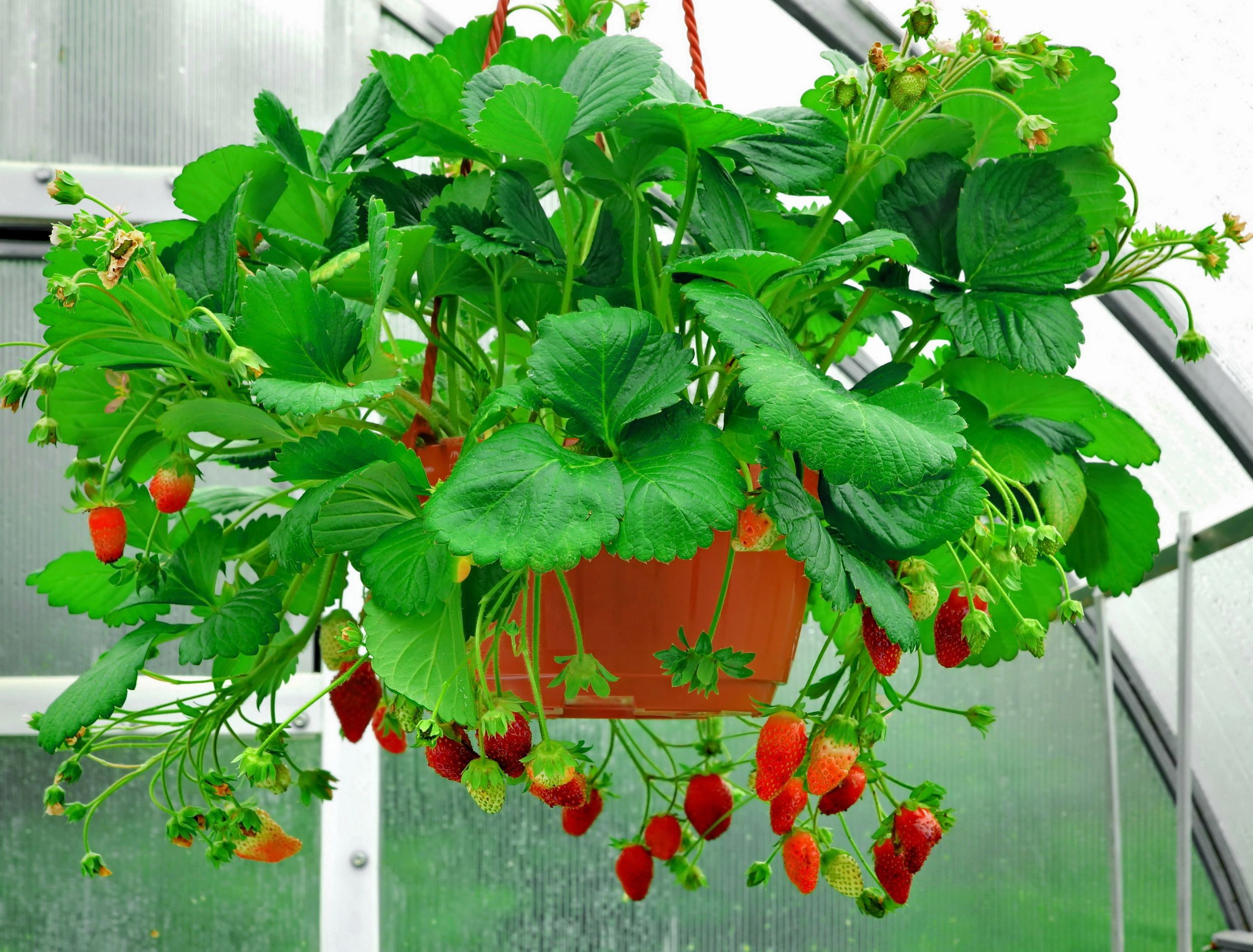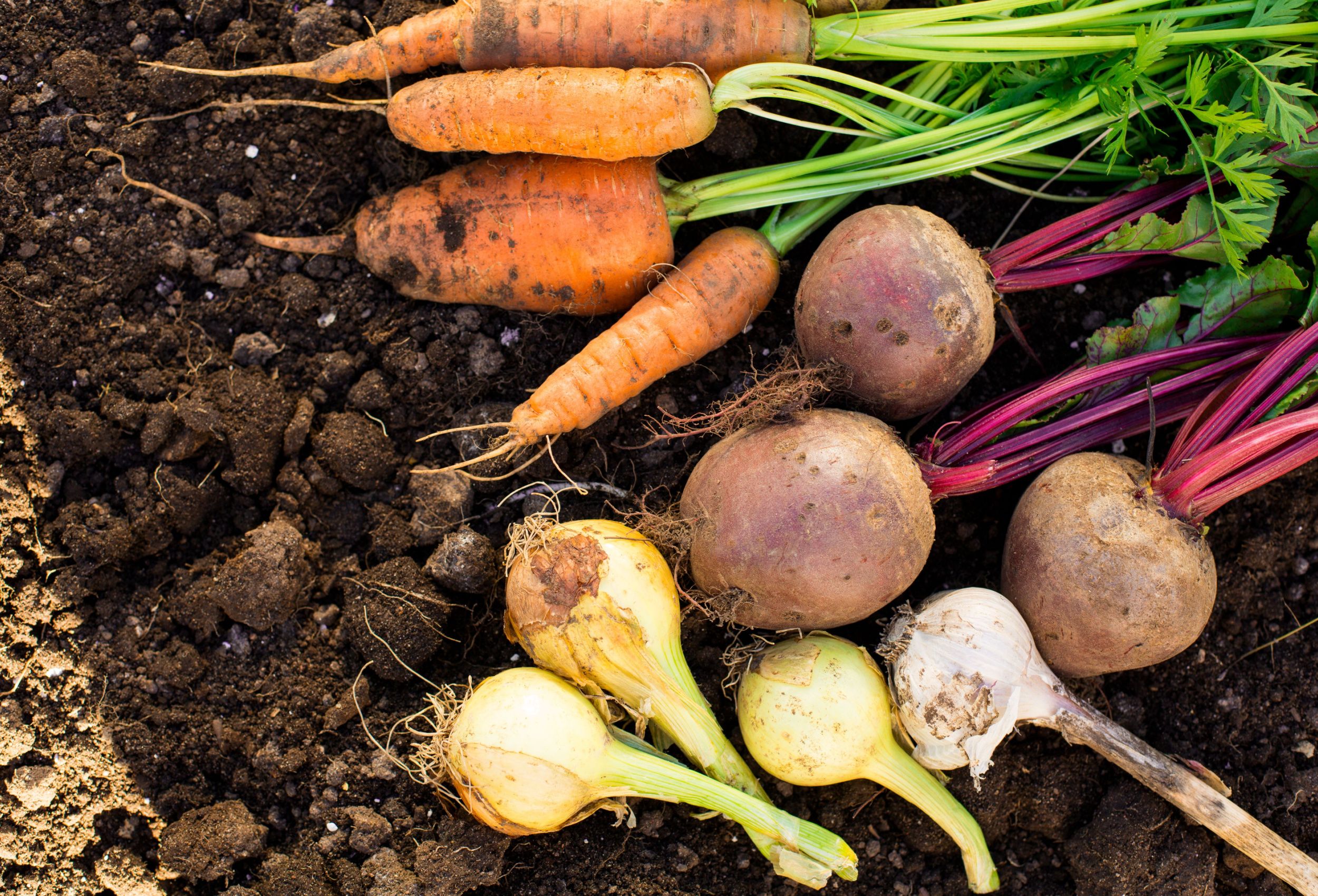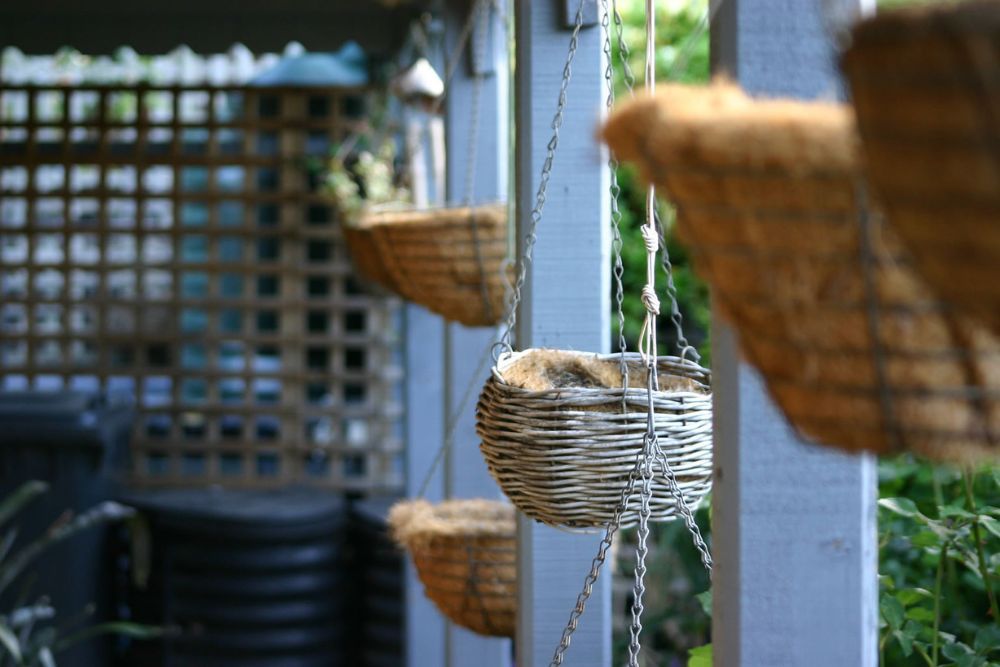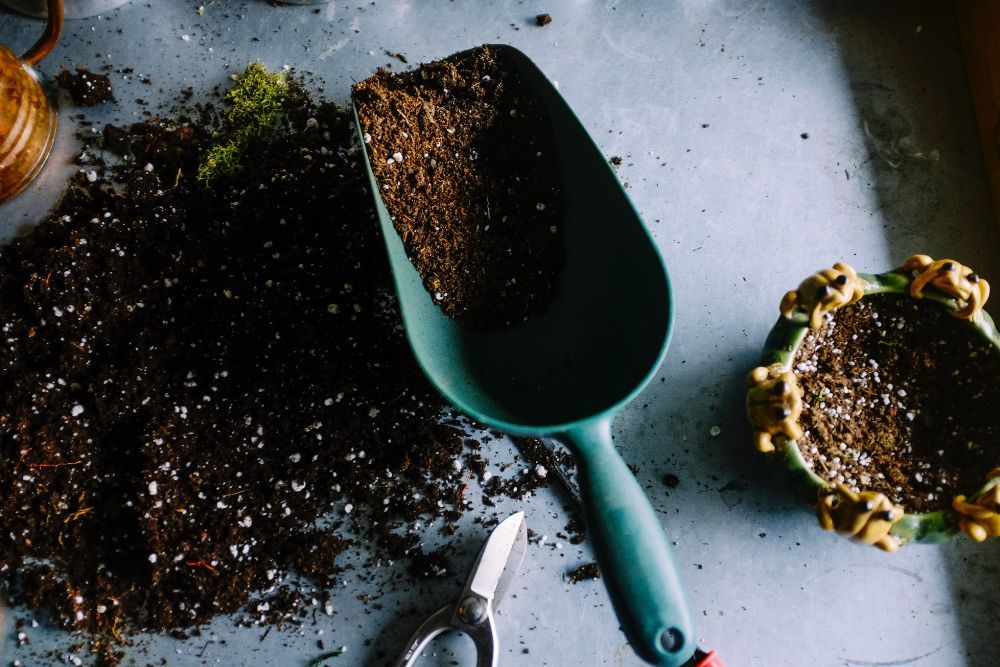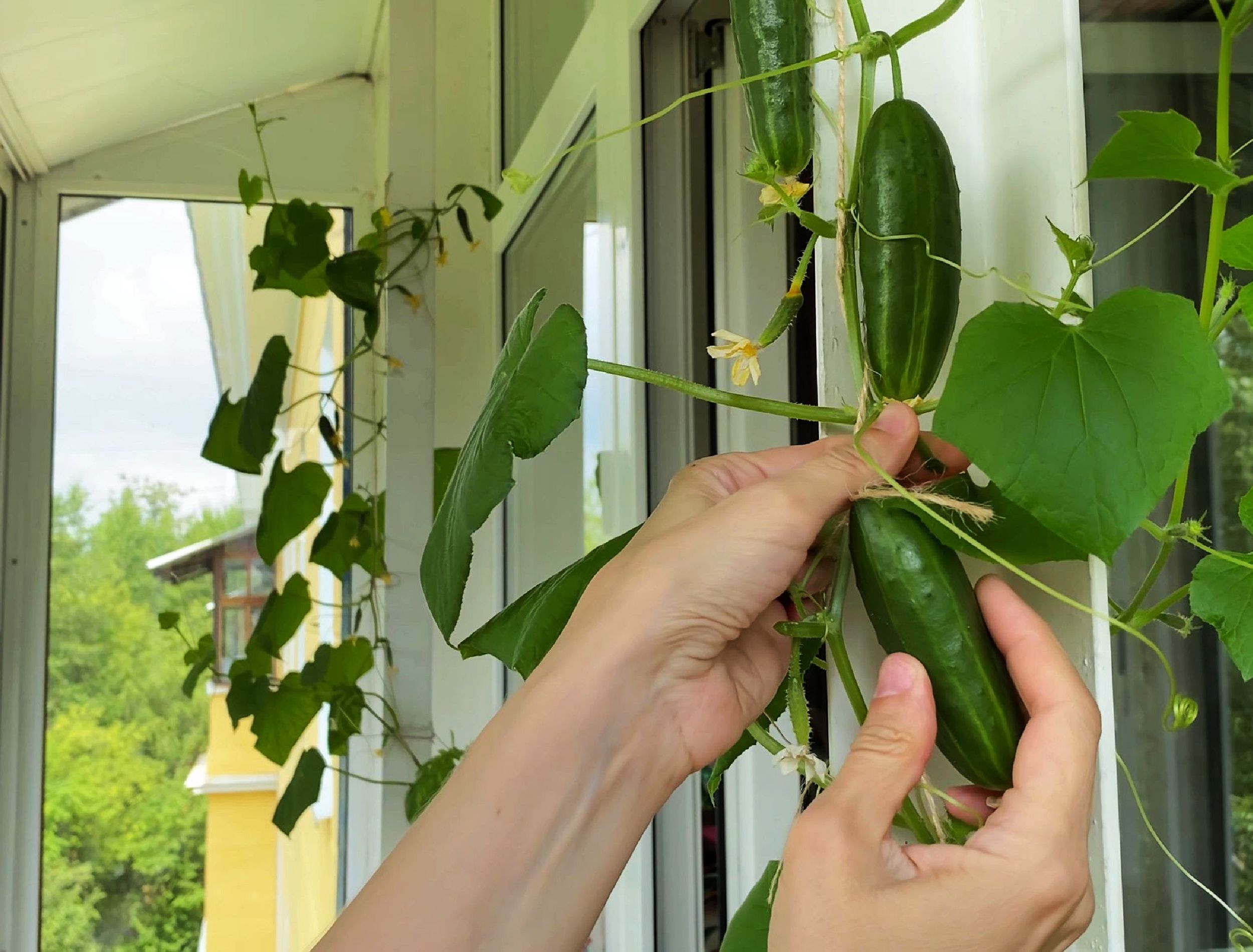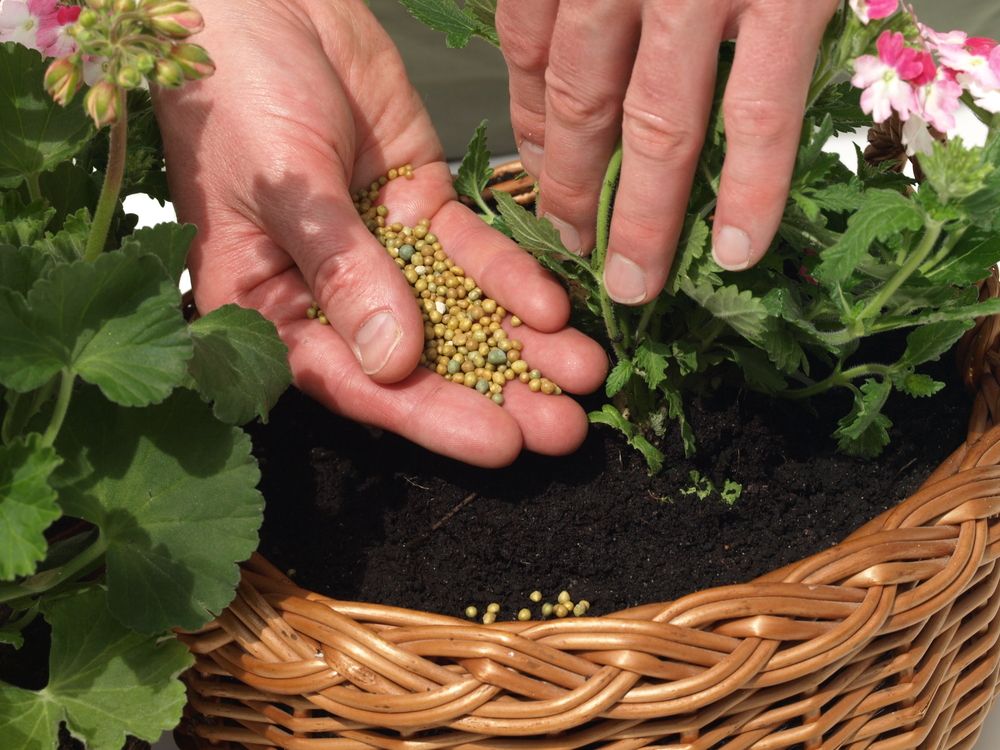Gardening enthusiasts don't need acres; just pick your veggies and fruit and grow them from the sky! Planting fruits and vegetables in hanging baskets is a great way to create beautiful aesthetics around your home. It is also an excellent solution for gardening enthusiasts who lack ample space to grow different types of crops.
Growing plants in hanging baskets is not very different from container gardening. But make sure to choose specific plants that thrive in the confines of a vessel and look gorgeous cascading down the sides of the baskets.
Discover how to make the most of this vertical gardening method to produce homegrown goodness!
Materials Required
Image credits: Gary Barnes via Pexels
Here are a handful of things you will need to start growing veggies and fruits in hanging baskets.
- Seedlings
- Hanging baskets
- Liners
- Potting soil
- Plastic bottles
- Fertilizer
- Watering can
Step 1 - Choose the Fruits and Vegetables
Image credits: Miramiska via Shutterstock
You can grow a wide variety of edible plants in humble baskets. However, choose your crop wisely since containers have little space.
For example, grow cherry tomatoes of the vining variety. These include 'Tiny Tim,' 'Tumbling Tom,' and 'Tumbler' hybrid. Add basil to the same pot, as they make excellent companion plants. You can also find dwarf varieties of citrus fruits, such as lemon, lime, and oranges, that will thrive in small planters.
Small peppers, such as cayenne, also do great in hanging planters. If you love eating salads, grow lettuce in baskets for a fresh supply of these leafy greens. Herbs are great for hanging baskets. Plant parsley, thyme, oregano, mint, and sage for flavor, aroma, and ornamental appeal.
Select different berries, including strawberries, blueberries, and cranberries; they are decorative plants that look fantastic hanging on your patios and in gardens.
Step 2 - Pick the Right Baskets
Image credits: Lachlan Hardy via Flickr
Choose a basket that has a minimum diameter of 14 inches. You want your container to hold at least 1 gallon of soil. Smaller quantities of potting soil dry out faster and lack the nutrient capacity for nourishing your crop.
Ensure the pot is supported well, as it will be heavy. Most importantly, the planter should be able to accommodate what you are growing.
You can use conventional plastic pots with drainage holes or robust metal cages to grow your fruits and vegetables. Plastic pots lack visual appeal but make up for it with their functionality. Metal cages require an additional step before they are ready for planting.
Before adding soil and compost to the cage, line the insides with plastic. For this purpose, you can use a natural liner at nurseries or a sturdy plastic, such as an empty soil bag. Poke multiple holes in the plastic to allow drainage. This liner is a barrier between the outside environment and the soil, reducing water loss through evaporation from the sides.
Step 3 - Fill With Soil
Image credits: Neslihan Gunaydin via Unsplash
Most produce needs rich, fertile, well-draining potting soil to flourish. Use high-quality, multi-purpose soil combined with slow-release fertilizer to enhance the nutrients required for growing healthy crops.
You can take multiple steps to improve the soil’s ability to hold moisture. Mix in a few handfuls of aged, rotted leaf mold or 20 to 40 percent perlite or vermiculite. Combine everything properly before adding the mixture to your baskets.
Once you add your plants, press the soil firmly, leaving an inch of space between the surface and the basket’s rim.
Step 4 - Hang Them in the Perfect Spot
Image credits: MarinaTr via Shutterstock
Most crops require plenty of direct sunlight to produce a bountiful harvest. So, hang your basket in a sunny area around your home. The locations should be sheltered from strong winds but still have fresh air circulation.
If you lack ample light, grow fruits or vegetables that can survive in partial shade and still produce an abundant yield. These include lettuce varieties like 'Red Sail' and 'Oak leaf,' blackberries, and raspberries.
Step 5 - Water Frequently
Image credits: tzahiv via Canva
Hanging baskets are notorious for drying out quickly, so keep a close eye on the soil’s moisture level. Check for dryness by inserting your finger in the soil and watering it whenever the top inch or two feels dry. You may have to water as frequently as twice daily during hot weather and windy conditions.
You can also create a drip feed system. Use a small plastic bottle and drill about ⅛ inch holes in the lid. Fill it with water and insert it upside down in the soil. The water will slowly seep out of the bottle, keeping your soil moist.
Step 6 - Feed Timely
Image credits: Ground Picture via Shutterstock
In addition to water and light, your plants need fertilizer for sustenance. The soil in the hanging baskets lacks the nutrients found in the ground due to the small quantity. Thus, it requires regular feeding to keep the plants nourished and thriving.
Check the label on the fertilizer’s packaging to determine the quantity for the amount of soil. Moreover, ensure that the fertilizer you buy suits your growing crop since different plants have different nutritional needs.
Plant a Hanging Garden
Growing fruits and vegetables in hanging baskets is a bit different from growing them in the ground, but it is fun and rewarding. Choosing the right plant, pot, and potting mix can lead you to success. The plants will also be thirsty and hungry more frequently, so don’t forget to water and fertilize.
Ready for a challenge? Hang your garden over your head and make it rain fruits and veggies! Who's willing to take the plunge? Share in the comments.

